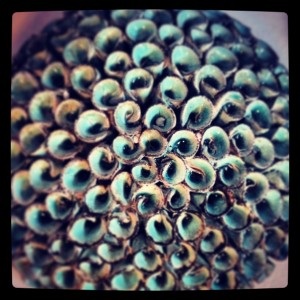Monday, January 27th, 2014

The following excerpt (sent to me by one of my former coaching clients Paulina Richards) by Tyler Perry, uses the metaphors of trees to describe the quality of friendships. I found it really helpful as in the last few years I have found that many of my close friendships have fallen by the wayside or have not been what I or the other person expected. It’s been helpful but not always easy to evaluate the role and contribution I have played in all of this.
Reviewing my history of friendships over the years has helped me gain insight and understanding into my own personal journey with friendship. Just today I wrote a piece about my first day at infant school. We had just moved house so I joined a week or two after term had started and was immediately cast into the role of the outsider. I was the newcomer who spent a lot of time on the sidelines feeling alone before I was gradually accepted. But I don’t think I really ever let go of that experience which included being bullied.
When it came to college I had a really close friend who was like a sister and one day, that was it, no announcement, no upset but it was clear the friendship was over. Perry’s analogy places her in the Branch category. See what you think.
Tyler Perry’s Friendship Tree Test ………..
I have this tree analogy when I think of people in my life, be it friends, family, acquaintances, employees, co-workers, whomever…They are all placed inside what I call my tree test. It goes like this:
LEAF PEOPLE
Some people come into your life and they are like leaves on a tree. They are only there for a season. You can’t depend on them or count on them because they are weak and only there to give you shade. Like leaves, they are there to take what they need and as soon as it gets cold or a wind blows in your life they are gone. You can’t be angry with them, it’s just who they are.
BRANCH PEOPLE
There are some people who come into your life and they are like branches on a tree. They are stronger than leaves, but you have to be careful with them. They will stick around through most seasons, but if you go through a storm or two in your life it’s possible that you could lose them. Most times they break away when it’s tough. Although they are stronger than leaves, you have to test them out before you run out there and put all your weight on them. In most cases they can’t handle too much weight. But again, you can’t be mad with them, it’s just who they are.
ROOT PEOPLE
If you can find some people in your life who are like the roots of a tree then you have found something special. Like the roots of a tree, they are hard to find because they are not trying to be seen. Their only job is to hold you up and help you live a strong and healthy life. If you thrive, they are happy. They stay low key and don’t let the world know that they are there. And if you go through an awful storm they will hold you up. Their job is to hold you up, come what may, and to nourish you, feed you and water you.
Just as a tree has many limbs and many leaves, there are few roots. Look at your own life. How many leaves, branches and roots do you have? What are you in other people’s lives?
I found it a helpful model for making an inventory of friendships. It is similar to a model I was introduced to some years ago by US Life Coach Laura Berman Fortgang. She introduces these three levels for evaluating your friendships:
- Rocket friendships are the kinds of friends who fire your up whenever you are around or in contact with them.
- Floaters are friends who are more neutralised. It’s easy to be with them but it is not that engaging or energising. They’re dependable, but there’s not a lot of challenge. There maybe a lack of depth and real connection missing from these relationships.
- Sinkers are the kinds of friendships where you realize that your energy is drained or decreased when you’re around or with these friends.
One of the ways you can really stretch yourself with your friendship evaluation is to as well as taking an inventory of your friends take an inventory on how you imagine your friends see you in any of the above roles.
- What friends experience you as the sinker/leaf people?
- What can you do to change or sift this relationship?
- Is it time to let it go?
- What friendships are your rocket or root friendships?
- With who are you the floater/branch people? What would move this friendship into a rocket or root relationship?
- What friendships is it time to let go of?
- Who are potential rocket or root people who you might have overlooked in your life?
No Comments
Sunday, January 12th, 2014
In the week I found myself browsing in one of my local TK Max stores. I’m not that much of a shopper but recently I’ve been finding that visiting department stores can be a bit of light relief, not a diversion away from work but an indirect way of topping up my creative well.
You never know what unusual items you might find in my local TK Max. I always head to the furniture section on the upper floor where you’ll often find odd pieces from the Far East. The other day it was an oak chest looking like it had just escaped life on a pirate ship, housing fifteen skinny drawers with brass handles. The kind of chest you’d find in your old primary school classroom where either large sheets of sugar and drawing paper were stored or old maps were held.
One friend purchased from the same store an African ceremonial stool embedded with cowrie shells that were not only beautiful to look at, but the white coral stone soothing to touch. It spoke volumes of stories and rituals in times past and held a place of reverence in her living room.
In her seminal book The Artist Way Julia Cameron writes about the importance of taking Artist dates, “An artist date is a block of time, perhaps two hours weekly, especially set aside and committed to nurturing your creative consciousness, your inner artist. In it’s most primary form, the artist date is an excursion, a play date that you preplan and defend against all interlopers. You do not take anyone on this artist date but you and your inner artist, a.k.a. your creative child. This means no lovers, friends, spouses, children – no taggers-on of any strips.”
My recent trip to TK Max was in its own way my version of topping up my capacity to creative by going on an artist date. I know you’re probably thinking, TK Max is not the kind of place one would traditionally think of being creatively inspired. But this was not unconscious retail therapy where I was in danger of spending money I didn’t have. In fact it was the opposite, I was enjoying time meandering amongst the products, feasting on the range of colours, shapes and textures.
In the same way you put petrol in a car when the tank is empty or running low I was feeding my creativity and topping up my creative reserves by browsing and exploring and making sure I don’t drain the creative tank dry.
When I found the object below at TK Max it was the lure of the turquoise blue colour stimulating memories of the colour of the ocean my family regularly swims in, a few feet away from the back door of my mums small beach house in Barbados, quickly followed by the sensory exploration of my fingertips tracing across the puckered holes covering the object that I knew instantly the item would come home with me.

Judy Reeves writing in her book Writing Together, Writing Alone describes artist dates as writing field trips, “Set aside a few hours to take your notebook or your laptop on location. Cafés, sure, but be a bit more adventurous. Points of arrival and departure (the bus station has a completely different ambiance than the airport).“
The idea of writing field trips is not only do they re-fill our creative tanks they are great spaces for writing practice and live writing prompts and stimulus for your writing.
When we write outside of our normal places of writing your Muse loves it. It’s that combination between routine and breaking routine with spontaneity. A bit like a meal without spices that moves from bland to fiery. When you write in unfamiliar spaces or at times outside of your preferred writing times you’re more likely to access ideas you don’t get to in your normal writing space or during your normal writing times.
But whereas Reeves suggests taking a chum along on a writing field trip, Cameron suggests going it alone and it is the latter that really works for me. Time wandering alone is time for me. It’s time where I get to listen to myself, where I get to be more playful and less serious and this is good for my writing.
I’ve noticed another thing that happens when I take writing field trips or artist dates alone, giving myself down times often results in me being more productive in the following hours or days. I find it personally satisfying to take artist dates and they leave me with more energy and I’m a much easier person to be with, primarily because I’ve made time for me, I now have more capacity to be with others, without feeling distracted.
Writing Field Trip Invitation
This week plan a series of writing field (you could book tickets for a music concert alone, visit an art gallery or exhibition, frequent a neighbourhood you don’t normally visit, take a long-train ride, watch the sunset or a Full Moon, take a trip to an Artist or stationary shop, take a long walk or go visit a park) trips for the next four weeks. Aim for one a week or fortnightly.
Writing field trips work just as well for social workers, managers and leaders (in a range of settings), retail staff, doctors or a surgeon as it does for writers. Think of it as a creative booster, a generator for inspiration, ideas and insights and quality time to think and top up your creative reserves.
No Comments





